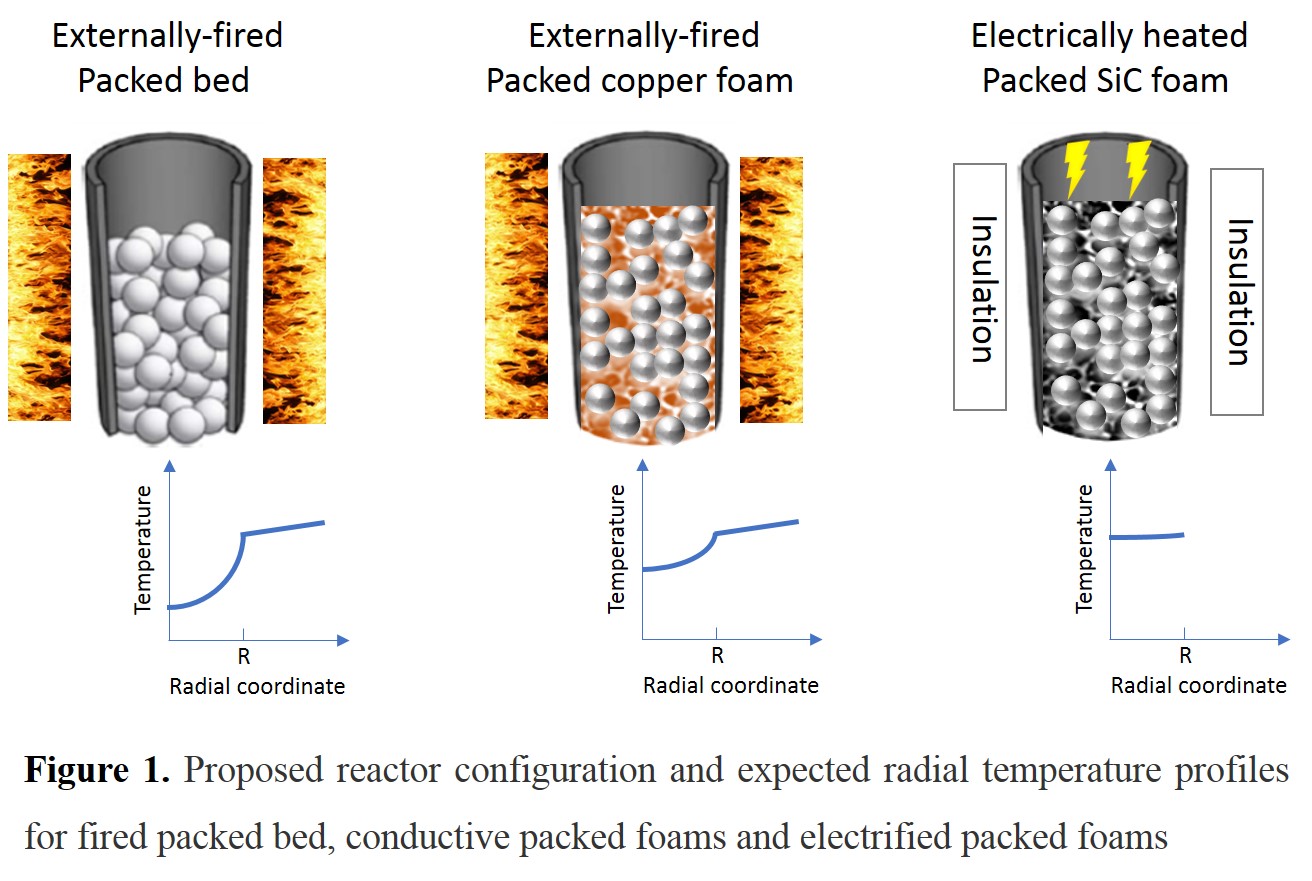Breadcrumb
- Home
- Publications
- Proceedings
- 2020 Virtual AIChE Annual Meeting
- Process Development Division
- Novel Reactors
- (430c) New Reactor Configurations for Compact Methane Steam Reformers

In this context, another point of interest is represented by the substantial increase of distributed electric energy production observed in the last decade worldwide. The large availability of relatively low-cost renewable electric energy provides in fact a significant opportunity to decrease the carbon footprint of endothermic chemical processes [1]. In particular, the application of this concept to the MSR process would provide a twofold beneficial effect in terms both of reduction of CO2 emissions and of incremented process effectiveness, thus making compact reformers a competitive alternative to hydrogen production by electrolysis.
Based on this scenario, we investigated in parallel the application of two novel and different MSR reactor layouts: the former one is based on highly thermal conductive open-cell foams for the intensification of conventional externally heated reformers, while the latter one is based on the possibility to exploit Joule effect for the generation of heat inside the reactor tubes with the adoption of electrically-resistive SiC foams. In both cases, the geometric supports (internals) can be made catalytically active either by packing small catalytic pellets into the open and interconnected porosity of the foam (packed foam configuration [2]) or by depositing a thin washcoat layer onto the surface of the foam (washcoated foam configuration [3]).
Conductive packed foam configurations were tested and compared extensively against a conventional packed bed reactor operated at lab-scale conditions. The presence of a conductive matrix flattens the internal temperature profiles, providing an advantage in terms of heat supplied to the system for the reaction. Both in kinetic regime or close to the thermodynamic equilibrium this phenomenon yields in higher conversions and reduced risk of deactivation with respect to the conventional configuration, thus enabling higher hydrogen productivity. The choice of the foam material represents a key aspect for the successful implementation of the solution. In this configuration, copper foams enabled very small radial and axial temperature gradients inside the reactor, thanks to the high thermal conductivity of the bulk material; as a result, an increase of the conversion at fixed reactor wall temperature was demonstrated.
In the configuration based on resistive foams, the electrified reactor exploits Joule effect to generate uniform heat supply in the reactor. Silicon carbide was found to be the material of choice to guarantee adequate electrical resistivity and thermal conductivity for stable operations of this reactor configuration. It is possible to supply 2 to 5 times the heat demand of conventionally fired reformers by imposing a voltage differential (in the range of 10-50 V at lab scale configuration) at the premises of the structured support. By this configuration, radially flat temperature profiles are present and, thanks to the adoption of highly active Rh catalyst, it is possible to reach the almost unitary methane conversion at GHSV in excess of 10000 h-1. In this configuration, silicon carbide is a promising material for foam heating elements, as it can handle high specific power, in accordance with the high thermal process demand. Moreover, the electrical resistivity of the materials allows for an adequate voltage drop across the reactor brackets.
Experimental activities on lab-scale setups were coupled with numerical modelling of the different process configurations to obtain a model-based design of the optimal configuration are ongoing. We think that both these reactor configurations could be at the base of efficient design of small scale reformers for hydrogen and syngas production with reduced CO2 footprint.
References
[1] S.T. Wismann et al., Ind. Eng. Chem. Res. 2019 58 23380-23388
[2] R. Balzarotti et al., Chem. Eng. J., 2019 123494
[3] R. Balzarotti et al., React. Chem. Eng. 2019 4 1387-1392
Acknowledgements
This project has received funding from the European Research Council (694910/INTENT).